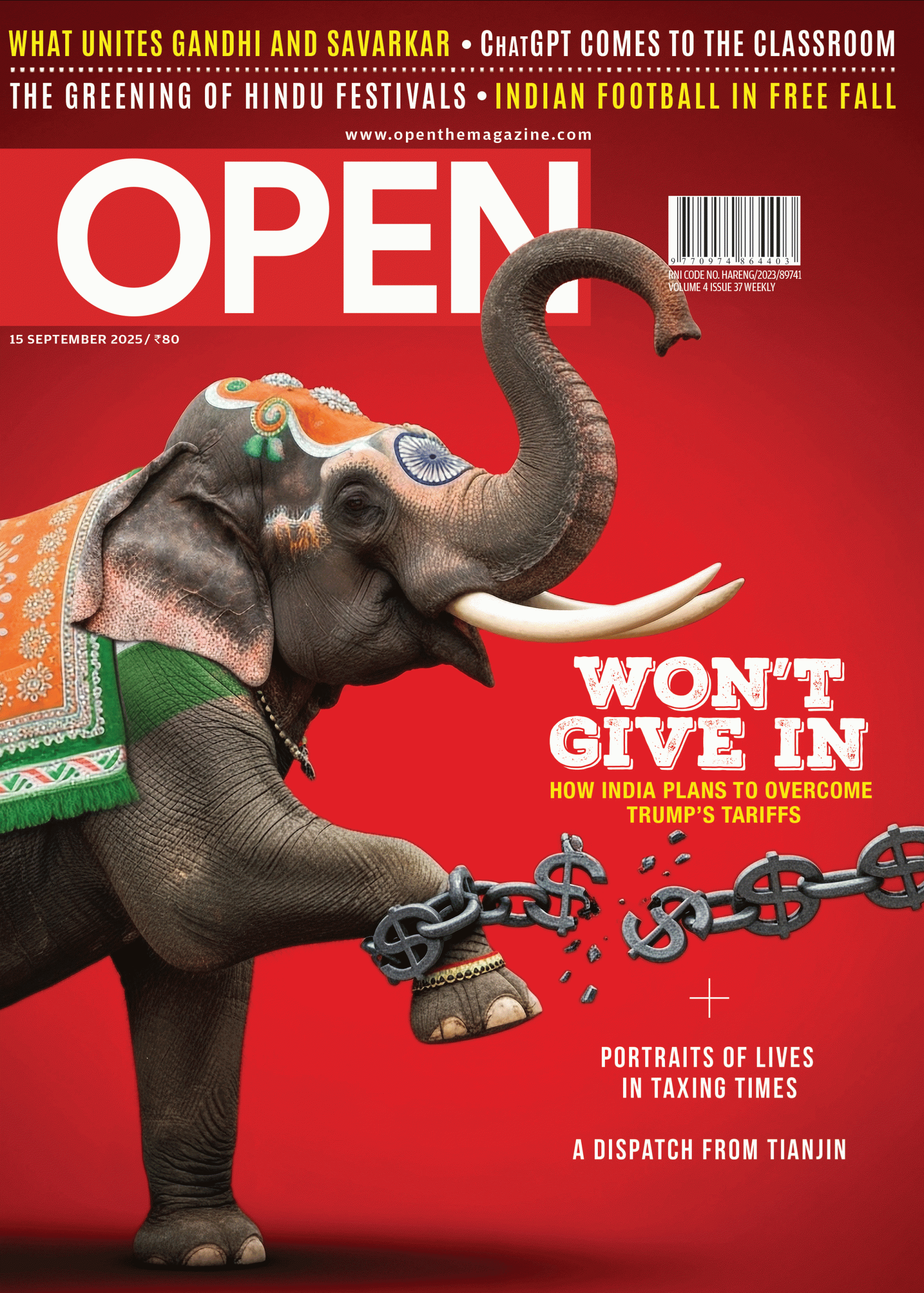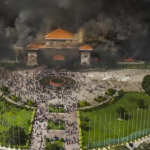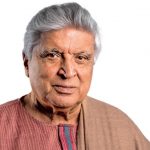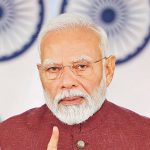His Master’s Lost Voice
The vanishing idea of the supreme leader in a party without a plot
/wp-content/uploads/2016/09/Hismastervoice1.jpg)
AT A RECENT MEETING held at his Tughlaq Road residence in New Delhi, Rahul Gandhi was meant to discuss with Congress legislators a way forward in states where the party was steadily losing ground. At the appointed time, however, he was not home. He arrived an hour late. Once the meeting began, several of those in attendance found their party vice-president distracted and indifferent to the suggestions being made. The man expected to succeed Sonia Gandhi as the party’s top leader sat through the discussions for barely a quarter of an hour, apparently unmoved by what other leaders had to say. Then, as abruptly as he’d arrived, he got up and left the room without having spoken a single word. It was a whole hour after his exit that the gathering was informed, by an office assistant, that he had left the premises for another meeting.
That is the way of the new Jajmani system.
In his book India’s Silent Revolution: The Rise of the Lower Castes in North India, Christophe Jaffrelot says that the Jajmani system defined the Congress party’s inner dynamics in the pre-Independence era. Mahatma Gandhi, unarguably its supreme leader then, used the system to argue for minimal social change and conflict among the cadre so that a unified fight could be put up against British rule.
The Jajmani system of the period, as Jaffrelot sees it, was one in which menials and artisans were paid small sums by the rest of society to perform pre-assigned duties that served the existing social order and civic set up. The etymology of the term ‘Jajman’ is revealing. It is derived from the Sanskrit ‘yagyaman’, which refers to a patron of a ‘yagya’, a religious ritual conducted by a Brahmin who is awarded a ‘dakshina’ or gift for invoking divine blessings. In modern society, the Jajman came to symbolise a feudal lord who would keep priests on his payroll and subjugate the masses. The British leveraged the attitudes of subordination bred by that system to control the colony through loyal zamindars and merchants. The colonial-era Congress adopted it to establish and enforce authority over party members.
In the party’s early days, Congressmen came from the educated class—lawyers, teachers, journalists and zamindars. They followed leaders such as Dadabhai Naoroji, SN Banerjee and Pherozeshah Mehta. The top-down exercise of power was an accepted norm, and each region had its stalwarts. The United Provinces, for example, had Motilal Nehru, Madan Mohan Malaviya and Purushottam Das Tandon; the Andhra region had Sitaramaiah; Gujarat had Sardar Vallabhbhai Patel; and Punjab had Lala Lajpat Rai. Command, rather than consensus, was the rule.
On Gandhi’s return from South Africa, he was the supreme arbiter. Some party leaders were keen on social change. In 1929, ‘Socialist’ Nehru argued in favour of a system that empowered owner-peasants. In 1930, he spoke for the boycott of taxes paid by farmers in the United Provinces, and three years later, came out with Whither India, a pamphlet in which he regretted that the Congress had yet to question the social status quo. Politically, Nehru wanted Independence from British rule, and economically and socially, an end to all class privileges and vested interests. But by 1936, Nehru had retracted the radical overtones of his views, as made clear by his acquiescence in the passing of the Tenancy Act that was widely seen as a victory of landlords over poor landless farmers.
The Jajmani system survived the first generation of Congress leaders. After Gandhi, Nehru was the natural inheritor of this authority. The only person who could challenge his authority was Patel, which he did in Jaipur Session in 1948. After winning the argument, he cited a Gujarati proverb which says that one has to put up with tantrums of the milch cow. He meant Nehru, who was the party’s chief vote-getter. Every other stalwart, be it Maulana Azad or GB Pant, went along with the norms long in place and bowed to the wishes of Nehru.
The magic of Nehru-Gandhi has apparently worn off. Even in Amethi and Rae Bareli, the party won just two of the ten seats in the last UP polls
It was when Indira Gandhi became Congress president that the powers of the ‘High Command’ began to be exercised with even sterner authority. In 1969, she split the party in response to a rebellion against her, and she turned even more authoritarian after crushing her rivals in the electoral fray. Again, she could control the organisation because she was the party’s principal vote catcher. So absolute was the power she arrogated to herself that her arbitrary actions would go unquestioned. In 1975, a few months after she imposed the Emergency, she summarily removed HN Bahuguna as Chief Minister of Uttar Pradesh because she saw him as a threat. The party, he was later to say, would not be destroyed but would wither away from lack of oxygen. After a short spell of President’s Rule, Mrs Gandhi installed a more pliant ND Tiwari as the state’s Chief Minister, a man who came to be known as a lackey of the Nehru-Gandhi clan.
The near-feudal powers vested in the Congress High Command, synonymous by now with the family, were also on display when Sonia Gandhi wrested control of the party after seven years of Narasimha Rao and Sitaram Kesri’s leadership. She was accepted by most Congressmen as the natural heir of the Nehru-Gandhi legacy. “Sonia Gandhi had been a brilliant leader of the Congress for close on two decades,” according to Punjab’s party chieftain Captain Amarinder Singh. Under her baton, the Congress-led UPA won two consecutive terms at the Centre.
Among the few strong regional leaders that the grand old party still has, Singh has recently asserted that Rahul Gandhi would have his full support whenever he takes charge as party president. If Rahul Gandhi is elevated, however, it will be mainly because Sonia Gandhi is confident that it’s time for a new generation to lead the party. This makes many Congressmen nervous. For, with Rahul as spearhead of its campaign for the 2014 General Election, the party was reduced to 44 Lok Sabha seats, its lowest tally ever. This rout and the slew of Assembly elections that followed have exposed the vulnerability of the party. The Nehru-Gandhi magic has apparently worn off, and so completely that even in its well-nurtured pocket boroughs of Amethi and Rae Bareli in UP, the party won only two of the ten Assembly seats in the last state polls. What made this especially galling for it was the fact that this region was considered part of the original ‘karma bhoomi’ (duty ground) of Nehru. When he entered public life, it was here that Gandhi had despatched him to get a hands-on feel of the famine conditions that were afflicting the area.
While the party’s Jajmani system has undergone many changes since those days, where it is headed now should give Congressmen no comfort.
AT A TALK held the GB Pant Social Science Institute in Allahabad about three years ago, Rahul Gandhi had famously spoken of poverty as “just a state of mind”—“It does not mean scarcity of food, money or material things. If one possesses self confidence, then one can overcome poverty.” While that may have worked well at a spiritual congregation, it drew intense flak at the political level, with some BJP leaders even charging Rahul with trying to make ‘economics irrelevant’. Some Congress leaders privately admitted how apprehensive they were, having to face key state elections under his leadership.
Rahul Gandhi’s most telling contributions of late have been his facetious potshots at Prime Minister Narendra Modi
That was just one instance of the vice-president being out of touch with the realities of politics. After the party’s 2014 flop show and virtual wipe-out in the mid-2016 clutch of state elections— from Kerala and Tamil Nadu to West Bengal and Assam—the very term ‘High Command’, which once inspired hushed tones within party circles, was being dismissed in some quarters as the ‘low command’. Social media erupted in scathing criticism of him. ‘Didi in Bengal, BJP in Assam, Amma in TN and Congress at 10, Jan Path’ said one tweet. Others, such as advocate Sanjay Hegde, poked fun at his reputation for vanishing now and then with this poser on Twitter: ‘Where is Rahul Gandhi planning a holiday now?’
Soon after the return of the Left Front to power in Kerala was confirmed, Congress leader and former Chief Minister AK Antony was quick to say that the defeat, while a setback for the party, was not nearly as bleak as its 1967 rout when it secured just nine of the state’s 133 seats. “But we rose again like a phoenix from the ashes,” he held, adding that the party was “disappointed but not disillusioned or disheartened” by the results. The Congress, he maintained, would introspect on the defeat and make a comeback.
Many others were much less confident. “Party morale is at its lowest ebb, defeat after defeat. Never has it been more obvious that the top leadership has lost control,” said a Congress leader from Karnataka. Offering an indication of just how grave the situation was, Digvijaya Singh, a party general secretary, openly called for “major surgery” in the party command structure.
There was only silence at the top, leaving Congress leaders recalling why Himanta Biswa Sarma, once a promising Congress leader of Assam, had switched to the BJP. Before the state elections, he had been repulsed by what he perceived as Rahul Gandhi’s feudal response to suggestions made by state-level leaders.
Instead of constructive moves to chalk out a coherent blueprint for the party’s rejuvenation, Rahul Gandhi’s most telling contributions of late have been his facetious potshots at Prime Minister Narendra Modi. First, it was his ‘Fair and Lovely’ jibe in Parliament on the Government’s unkept promises on black money. This Monsoon Session of Parliament saw him mouthing the clichéd ‘Arhar Modi’ taunt to drive home the Government’s inability to control the spiralling prices of essentials such as pulses. Worse, on key issues the Congress under Rahul appears to have completely lost the plot, and at a time that good leadership could have made the party a real difference. “He’s like a man who has a death wish, chopping the branch on which he is perched,” rues one party leader.
The party’s lack of synchrony in views on matters of significance among top leaders has been showing up sorely and way too often, pointing to the absence of an authoritative party line based on internal debate. In July, when former Home Minister P Chidambaram suggested that the Congress, the National Conference and the PDP—which rules J&K in alliance with the BJP—work together to restore the confidence of Kashmiris in India and resolve the crisis in the state, the party held a hurried press conference within hours to call that his ‘personal view’ and not the party’s official stance. Chidambaram had also advocated granting the state greater autonomy so that Kashmiris could frame laws for themselves within the ambit of the Constitution.
Instances of dissonance apart, there is also gathering evidence that Rahul’s word is command for fewer party members than Sonia’s was (and is). With the Congress President’s faltering health and medical advice of bed rest, the disarray in the party has become pointedly apparent. “The High Command has lost the plot and is unable to rein in regional satraps or reinforce confidence in others in several states,” acknowledges a party leader. That is starkly evident in Delhi, where Gandhi’s nominee in charge of the state, Ajay Maken, remains unacceptable to other party leaders. Meetings convened by him to discuss party matters in the Union Territory have by and large gone unattended. Towards the end of July, friction within the Delhi unit crept out into the open with former Congress MP Sandeep Dikshit lashing out at Maken in a blog for allegedly having tried to ‘discredit’ his mother and former Chief Minister Sheila Dikshit with false CWG- scam related charges in the run-up to the 2013 Assembly polls. Maken was the Congress candidate for chief ministership in those elections, and the party under him sank to zero seats in the Delhi Assembly in the polls held last year. His machinations against the former Chief Minister, Sandeep Dixit said without naming him, was what led to the party’s decimation in the capital.
Sheila Dixit has recently been named the Congress chief ministerial candidate for UP in the upcoming Assembly elections there. The idea, clearly, is to cash in on her Brahmin surname and thus attempt to lure back sections of the upper-caste vote that the party lost in India’s most populous state long ago.
In the hill state of Uttarakhand, meanwhile, although the Congress managed to win its legal battle to restore the government of Harish Rawat, state party head Kishore Upadhyay recently demanded that the Chief Minister “respect ministers, MLAs and district leaders” and meet and hear them out regularly. Or else, he warned, the government led by Rawat would meet the same fate as the UPA at the Centre.
These are all signs of the failing authority of the Congress High Command. Is the Jajmani system unravelling? Still, what remains of the party seems happy to be led to nowhere by an ineffective jajman.

/wp-content/uploads/2025/09/Cover_Tariff-scaled.gif)














More Columns
Young and Angry in Nepal Ullekh NP
Peter Navarro: Trump’s Rabble Rouser VK Shashikumar
Faith, Fury and a Poet: Why Javed Akhtar’s Critics Miss the Point Tufail Ahmad